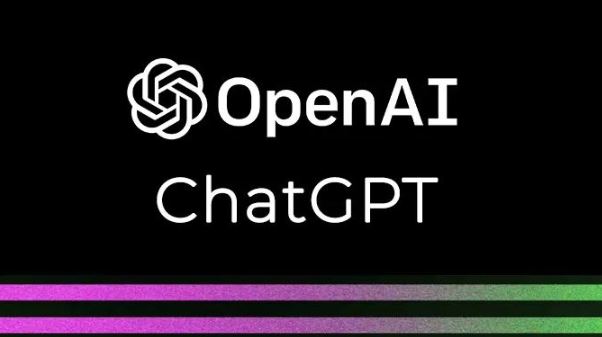ChatGPT: get instant answers, find creative inspiration, and learn something new
That is how ChatGPT presents itself on the internet. It makes AI, Artificial Intelligence, available to everyone on-line. A member of ours asked for an analysis of the post: “Simple logic shatters the myth of emissions impact”.
Below the analysis of ChatGPT with my comments in italics:
Oceans’ Role in Climate: The article correctly states that oceans cover a significant portion of the Earth’s surface and play a crucial role in climate regulation. The oceans do indeed absorb and distribute a large amount of the Sun’s energy, and ocean currents, like the Gulf Stream, help transport this heat around the world.
The oceans cover a DOMINANT part of the Earths surface. They contain some 50 times the amount of CO₂ that the atmosphere holds.
Little Ice Age (LIA): The article refers to the LIA, a period between the 16th century and 1850 when temperatures were generally cooler. While the LIA is a recognized period in climate history, it is an oversimplification to attribute its onset and termination entirely to the oceans without acknowledging other factors.
The argument is turned back-to-front: It is a fact that LIA was cooler than today. The post does not attribute this fact to an influence from the oceans. It merely concludes that during those centuries the oceans must have become cooler. No mention is made of cause and effect.
CO₂ Solubility in Water: The article rightly points out that as water warms, its ability to hold CO₂ decreases (Henry’s Law). Warmer water can lead to the outgassing of CO₂ into the atmosphere. However, this is just one of many processes that affect atmospheric CO₂ levels.
It is not just a possibility that warmer water emits the gas. With enormous volumes of the gas being emitted around the equator and absorbed at higher latitudes, it is obvious that the balance of the turn-over depends on the temperatures of the oceans’ waters. Warmer waters will emit more than they absorb.
Of course there are many processes that affect atmospheric CO2 levels. However, there is none that can match the natural turn-over of which human emissions are but a small fraction.
Misunderstanding Human Emissions: The logic in the article takes a misstep when it claims that human emissions go directly into the oceans and do not raise atmospheric CO₂ levels. This assertion is inconsistent with scientific understanding. While oceans do absorb a significant portion of CO₂ emissions, they do not absorb all emissions instantaneously. The Keeling Curve, which charts atmospheric CO₂ levels at Mauna Loa Observatory since the late 1950s, shows a clear and consistent rise, demonstrating that human emissions are increasing atmospheric CO₂.
This proves that ChatGPT cannot think by itself. It does not even dispute the process described: Human emissions raise the partial pressure in the air immediately. Thus the difference to the partial pressure in warming water decreases immediately. The outgassing from water is reduced with the same volume that is added by man. Simple logic.
Human emissions are absorbed in the oceans.
Of course, “immediately” must be understood in terms of climatic processes. It may take a year for emissions in the Northern Hemisphere, NH, to be fully noted in the Southern Hemisphere, SH.
The reference to the Keeling curve is the fundamental mistake of the IPCC. This curve shows a rise, which largely is simultaneous with that of human emissions. However, this does not prove any mutual dependence. In this case we know that the level in the air did not show any effect of the decreased emissions during the pandemic.
The logic detailed above proves that IPCC has completely misunderstood cause and effect. That is of course the reason that practically all of IPCC‘s “projections” and “climate models” so far have proven totally false.
Misunderstanding Climate Feedbacks: The article’s final claim that because ocean temperatures influence CO₂ levels, CO₂ cannot in turn influence temperature is a misunderstanding of climate feedback mechanisms. While it’s true that warmer oceans can release more CO₂, higher atmospheric CO₂ levels also contribute to the greenhouse effect, trapping more heat and leading to further warming. These processes are not mutually exclusive; they can and do occur simultaneously.
This is the “hypothesis” of IPCC, i.e. a guess, which has been disproved by the development of reality during the 30 years it has been aired.
In summary, while the article gets some basic scientific concepts right, it makes significant errors in its interpretations and conclusions regarding the relationship between CO₂ and climate. The overwhelming consensus among climate scientists is that human-caused CO₂ emissions are a primary driver of recent global warming.
The frase “overwhelming consensus” proves that ChatGPT is completely ignorant of the basic fundamentals of “science”. Just like IPCC. “Consensus” refers to politics. IPCC is a political body, which has proven it has no understanding of “real science”.
Nobel laureate 1973 Ivar Giaever and several others are politely calling its reports “pseudo science” rather than trash.
ChatGPT knows no better than its programmers. These refer to opinions by others with no understanding of their competence or lack thereof.
ChatGPT is lacking “intelligence”.
+ – + – + – +
